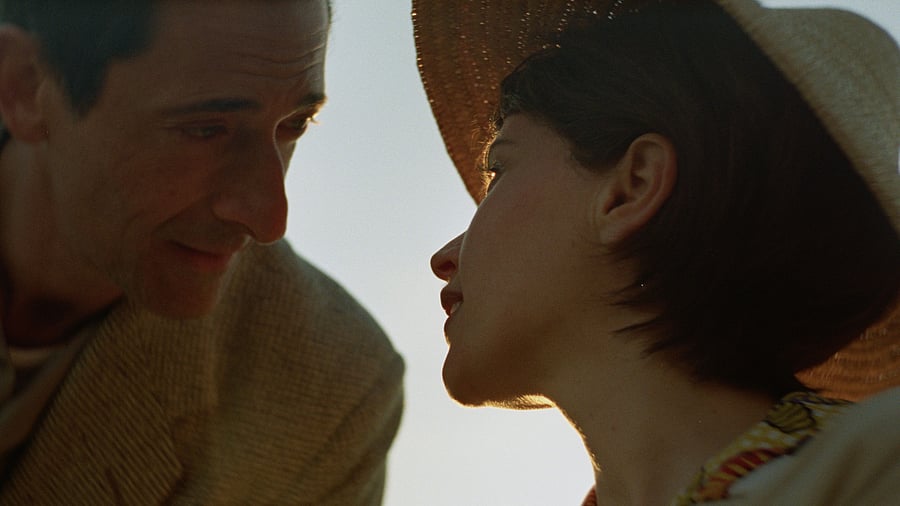
Credit: Special Arrangement
If you saw the poster for The Brutalist, featuring Adrien Brody squinting his eyes, staring straight at you in a low-angle shot, cigarette in mouth, with streaks of fire flying across, you might take him for an Italian-American gangster. Especially since The Brutalist sounds like the perfect title for a gangster flick, set in late 1950s America, adding to its vibe as the ultimate land of freedom and wild wealth.
But The Brutalist isn’t that. It’s about architecture — big, heavy, concrete-and-steel stuff. These imposing structures mirror the post-World War II psyche. For those untouched by the war’s direct traumas, these brutalist buildings might feel cold and uninviting, even ugly. But for those who have endured the dehumanising horrors of war, they represent something deeply intimate.
Director Brady Corbet, co-writing with his wife Mona Fastvold, uses the life of a brutalist architect, László Tóth — played masterfully by Adrien Brody — to unflinchingly examine the flip side of the American Dream.
László, a Holocaust survivor, is over the moon when he escapes the Nazis and hits America’s shores. The first time he sees the reflection of the Statue of Liberty, it’s upside down. That image hits hard, and at first, you’re not sure what to make of it. Daniel Blumberg’s epic score cranks up the moment’s grandeur, hinting that this could be a tale of a hate-scarred man reclaiming his dignity. But that inverted American symbol foreshadows something sinister.
László isn’t just robbed of his identity, self-respect, and family — he’s also denied his livelihood. A once-accomplished architect in Europe, he’s reduced to begging and stealing on the streets of America. His fortunes seem to change when he encounters Harrison Lee Van Buren, a wealthy industrialist with a deep passion for art. At first, it appears to be a match made in heaven: a great artist meeting a patron with deep pockets. In an ideal world, this partnership would yield some of the greatest artistic achievements ever seen. But then greed, bigotry, hatred of the new, distrust, and flat-out narcissism creep in, turning it toxic.
László escapes one trap just to stumble into another. Still, his passion for art and the drive to build something massive — loaded with features and subtext that mock the powerful — keep him going. The men in charge can’t see the art in these monstrous structures, the hidden story that will whisper to future empathetic souls about horrors inflicted on the powerless. These buildings stand as huge monuments for victims and survivors, a record so they’re never forgotten.
In László, you find an uncompromising artist, but in a world ruled by money, he is powerless. The dynamic between art and patron paints a complex relationship between László and Lee. Who owns whom? Does the artist’s sheer imagination ultimately win over the patron? Or does the patron seek to own the art —exercising power over the artist — because no amount of money can buy what the artist possesses?
Adrien Brody once again delivers an Oscar-worthy performance as a Holocaust survivor and starving artist racing against time to leave his mark before being consumed by civilization’s decay. Guy Pearce and Felicity Jones beautifully complement the narrative, embodying the destructive and nurturing forces in László’s life.
Beyond its politics, The Brutalist is an immersive cinematic experience. Cinematographer Lol Crawley transports the audience with his tight frames, reinforcing the forced perspective that László himself aims to achieve in his work. The film’s music, visuals, and performances blend seamlessly, offering a meditative experience that reminds us of the sheer power of the big-screen experience.